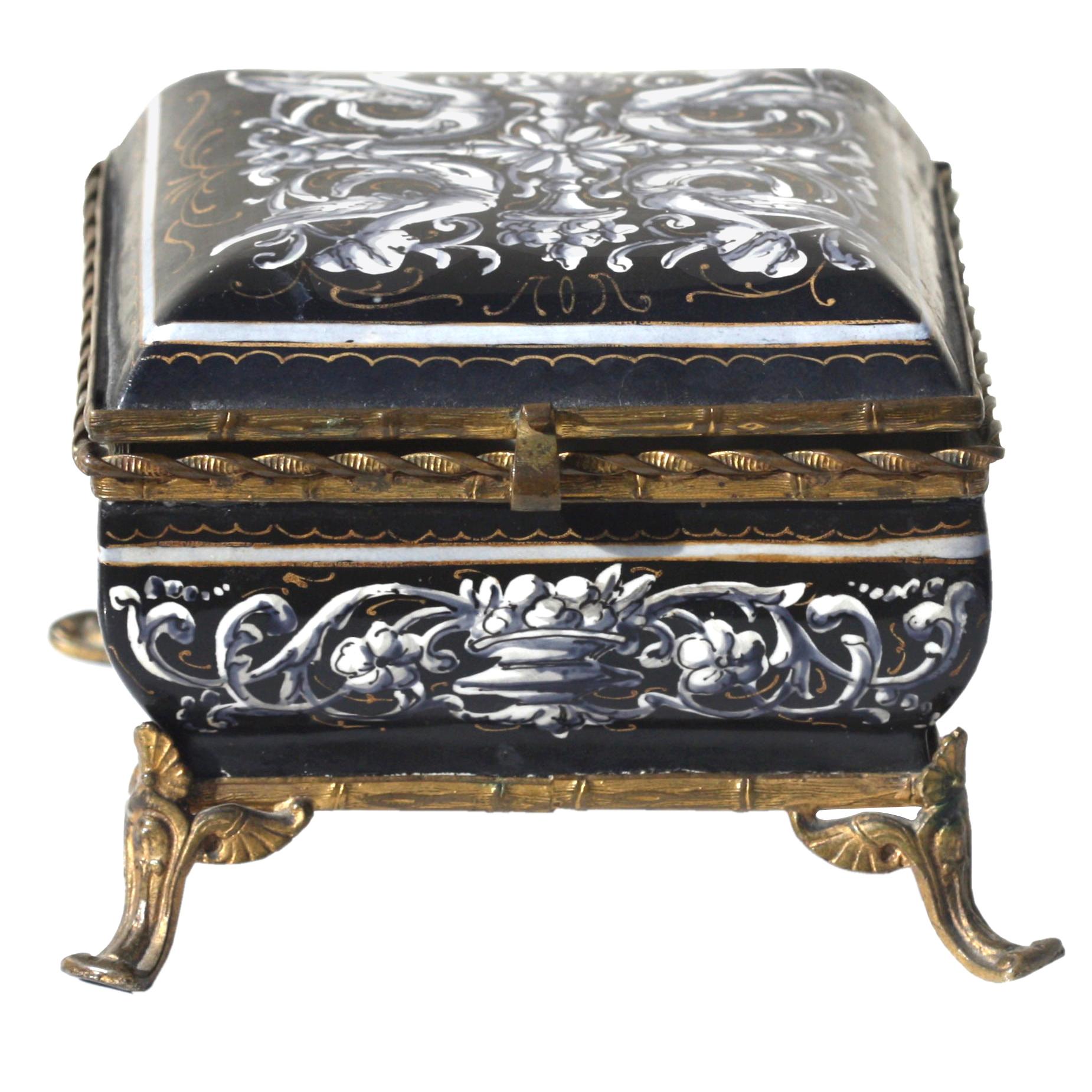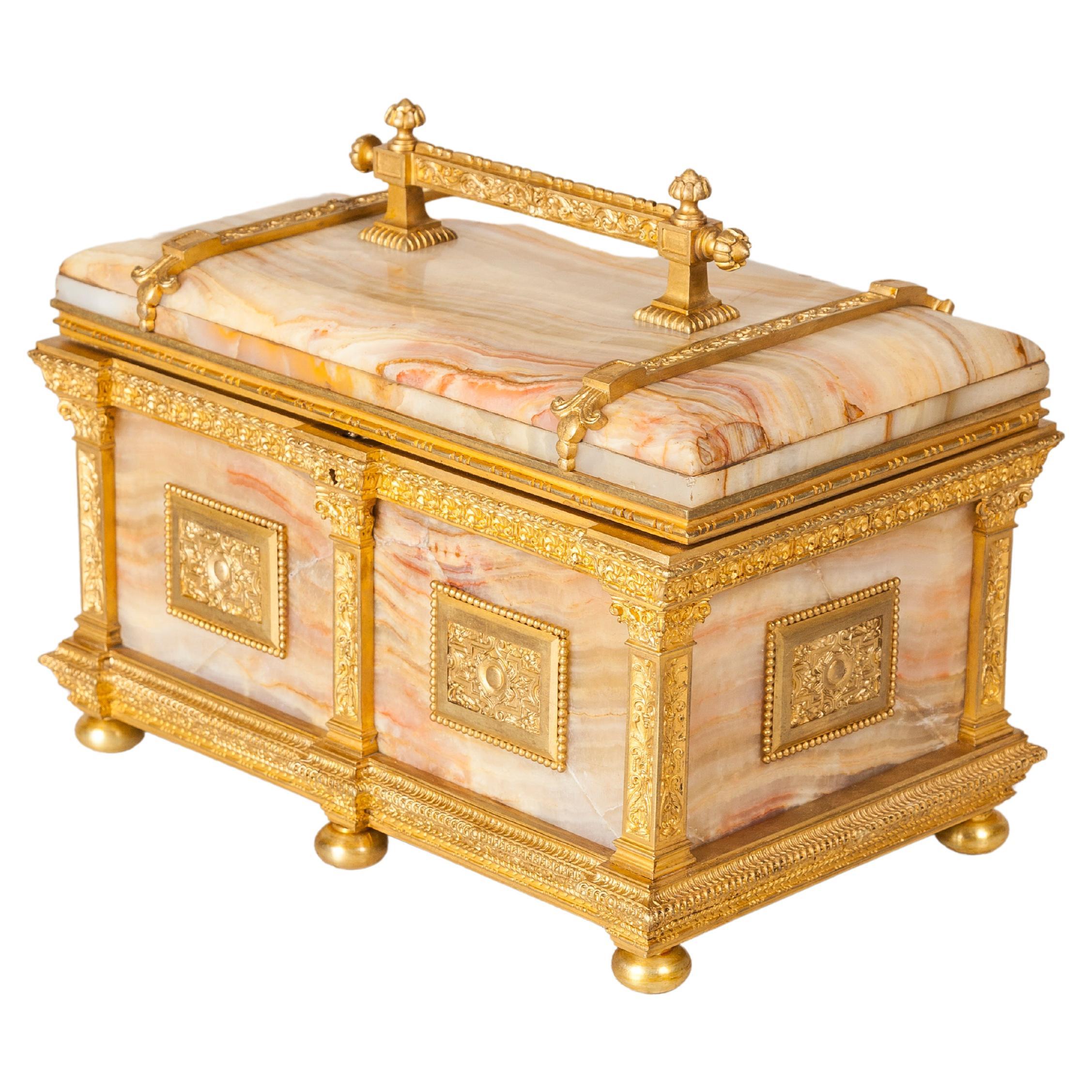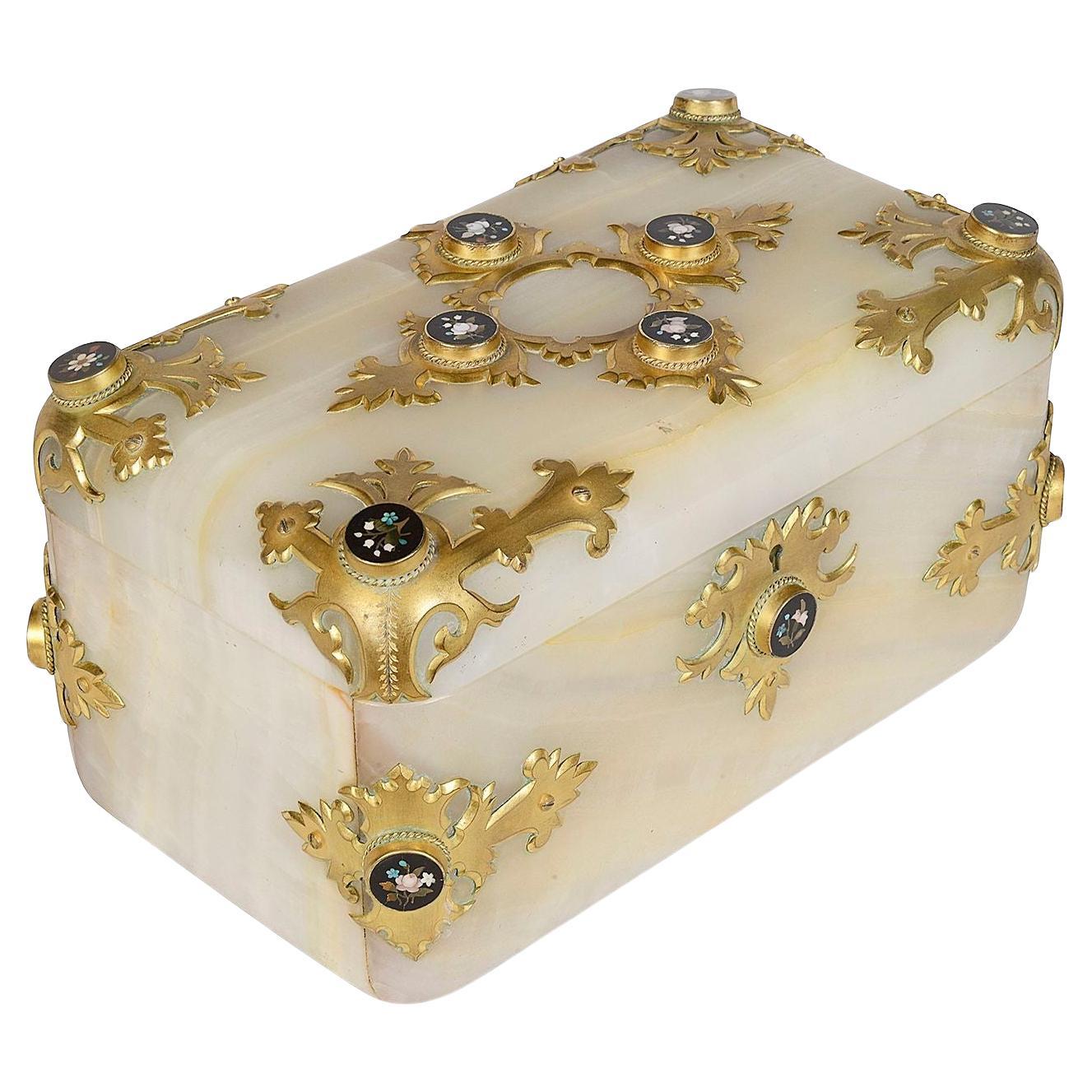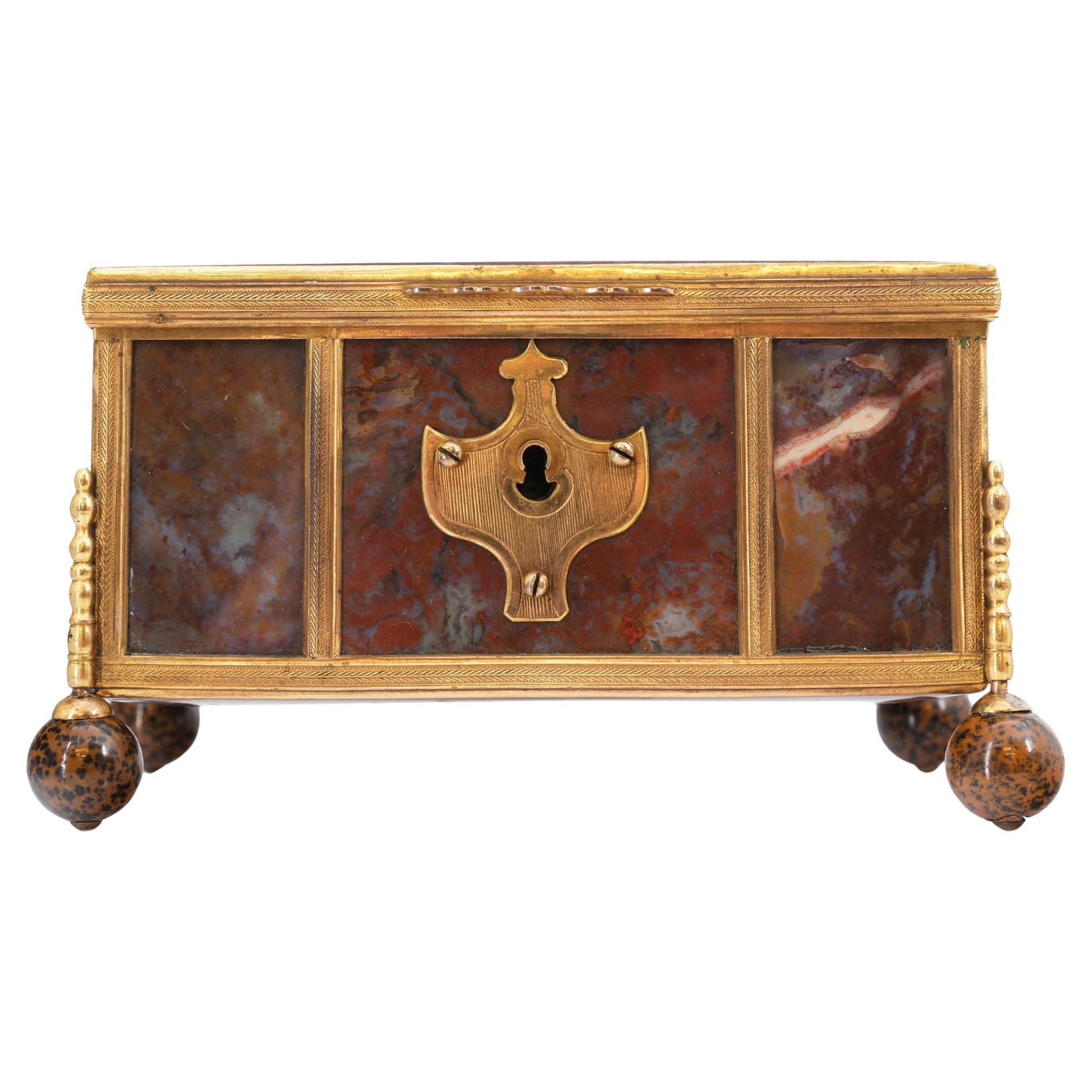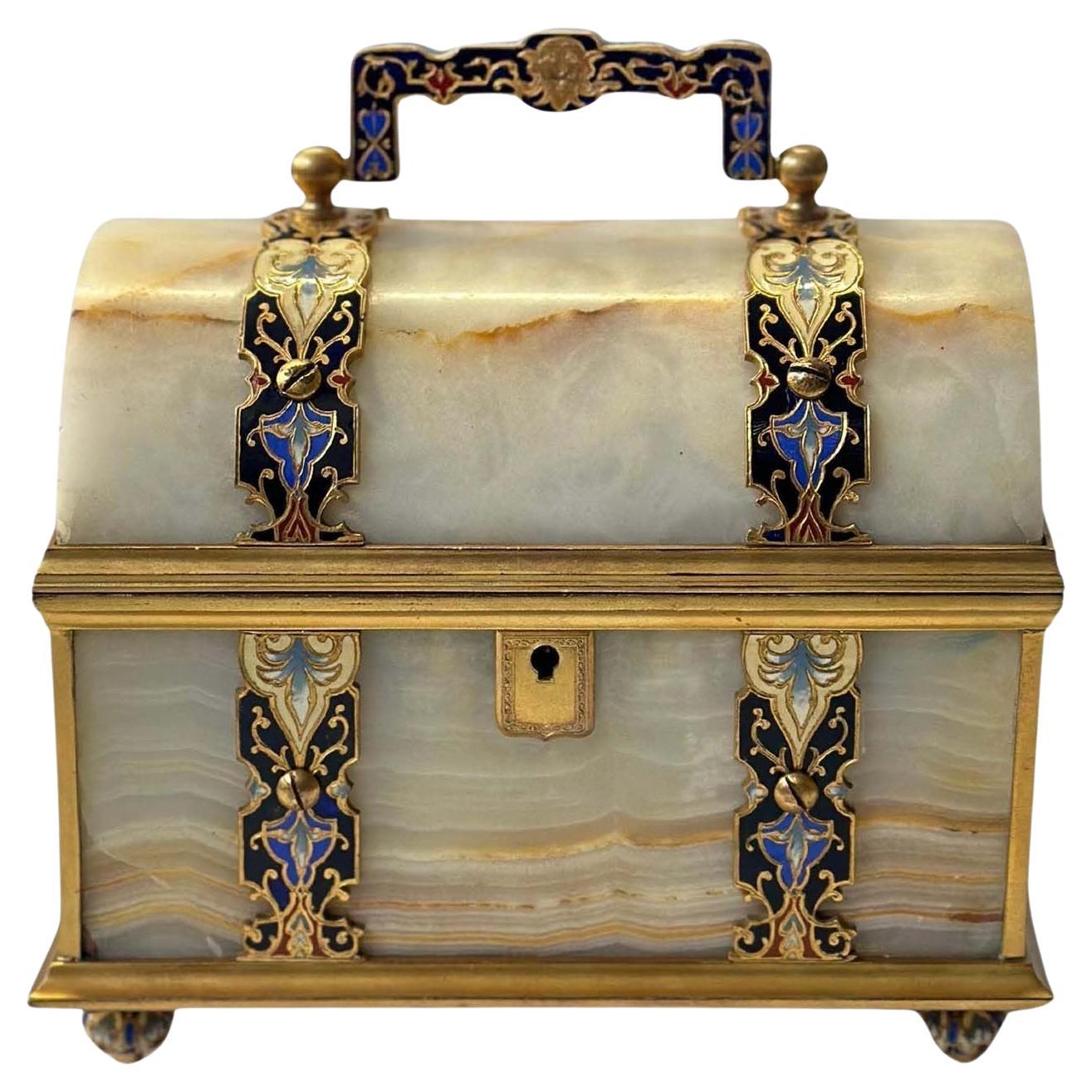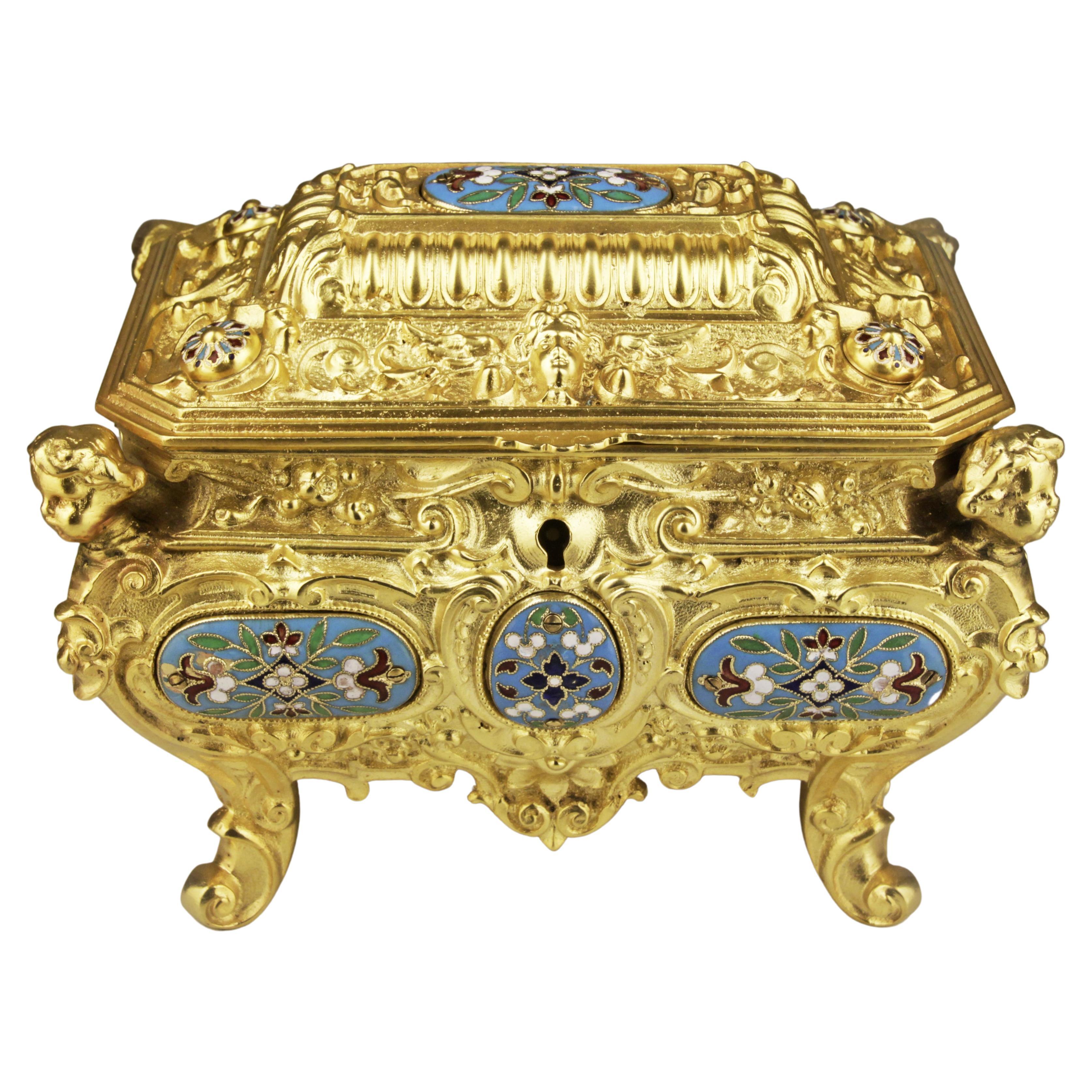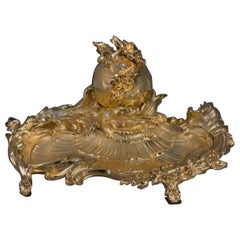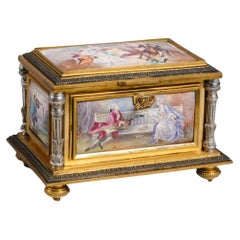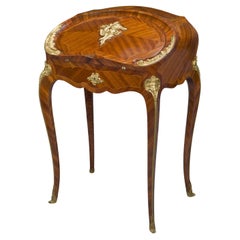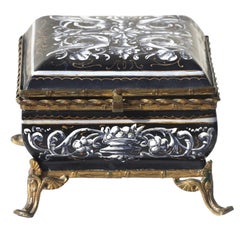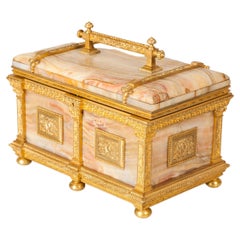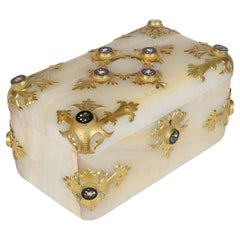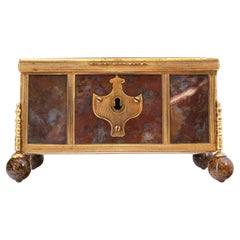Items Similar to Renaissance Revival Gilt-Brass and Agate Dressing Table Box. French, c 1870
Want more images or videos?
Request additional images or videos from the seller
1 of 10
Renaissance Revival Gilt-Brass and Agate Dressing Table Box. French, c 1870
$21,948.32
£16,000
€18,744.17
CA$30,827.46
A$33,938.75
CHF 17,346.17
MX$405,068.12
NOK 220,853.75
SEK 206,669.87
DKK 140,008.03
About the Item
A Renaissance Revival gilt-brass and agate mounted dressing table box.
French, circa 1870.
This fine box is applied with foliate engraved strap-work and side handles and finely polished agate cabochons. The interior is fitted with cut-glass boxes, containers, a hand mirror and various mother-of-pearl mounted implements.
- Dimensions:Height: 7.49 in (19 cm)Width: 11.42 in (29 cm)Depth: 8.67 in (22 cm)
- Style:Renaissance Revival (In the Style Of)
- Materials and Techniques:
- Place of Origin:
- Period:
- Date of Manufacture:circa 1870
- Condition:
- Seller Location:Brighton, GB
- Reference Number:Seller: B716301stDibs: LU1028012925321
About the Seller
5.0
Recognized Seller
These prestigious sellers are industry leaders and represent the highest echelon for item quality and design.
Established in 1964
1stDibs seller since 2014
59 sales on 1stDibs
Typical response time: 1 hour
Associations
The British Antique Dealers' AssociationLAPADA - The Association of Arts & Antiques Dealers
- ShippingRetrieving quote...Shipping from: Brighton, United Kingdom
- Return Policy
Authenticity Guarantee
In the unlikely event there’s an issue with an item’s authenticity, contact us within 1 year for a full refund. DetailsMoney-Back Guarantee
If your item is not as described, is damaged in transit, or does not arrive, contact us within 7 days for a full refund. Details24-Hour Cancellation
You have a 24-hour grace period in which to reconsider your purchase, with no questions asked.Vetted Professional Sellers
Our world-class sellers must adhere to strict standards for service and quality, maintaining the integrity of our listings.Price-Match Guarantee
If you find that a seller listed the same item for a lower price elsewhere, we’ll match it.Trusted Global Delivery
Our best-in-class carrier network provides specialized shipping options worldwide, including custom delivery.More From This Seller
View AllA Sèvres Porcelain, Rectangular Jewellery Casket
Located in Brighton, West Sussex
A Gilt-Bronze Mounted Turquoise Sèvres Porcelain Rectangular Jewellery Casket, painted with a seated mother and child before a window. This is with...
Category
Antique 19th Century French Decorative Boxes
Materials
Ormolu
Louis XV Style Gilt-Bronze Encrier by Paul Sormani, French c 1870
By Paul Sormani
Located in Brighton, West Sussex
A Rare Louis XV Style gilt bronze Encrier, By Paul Sormani.
French, circa 1870.
Signed 'P. Sormani, Paris' to the underside of the cover.
Thi...
Category
Antique Late 19th Century French Louis XV Inkwells
Materials
Bronze
Fine Louis XVI Style Gilt-Bronze and Sèvres Style Porcelain Mounted Jewellery
By Manufacture Nationale de Sèvres
Located in Brighton, West Sussex
A fine Louis XVI style gilt-bronze and sèvres style porcelain mounted jewellery box.
Of rectangular for this charming jewellery box has a hinged lockable lid above silvered column...
Category
Antique 19th Century French Louis XVI Jewelry Boxes
Materials
Bronze
Louis XV Style Gilt-Bronze Mounted Bureau de Dame, by François Linke
By François Linke
Located in Brighton, West Sussex
A Louis XV Style Gilt-Bronze Mounted Bureau de Dame, by François Linke.
Signed to the bronze mount ‘F.Linke’.
Linke Index Number 1650.
This very fine and unusual bureau de dame ha...
Category
Antique 19th Century French Louis XV Desks
Materials
Ormolu
Fine Louis XV Style Gilt-Bronze and Sèvres Style Porcelain Inkwell, circa 1890
By Manufacture Nationale de Sèvres
Located in Brighton, West Sussex
A fine Louis XV Style gilt bronze and Sèvres style Porcelain inkwell.
French, circa 1890.
This elegant and sophisticated inkwell is of sarcophagus form with finely painted por...
Category
Antique Late 19th Century French Louis XV Inkwells
Materials
Bronze
A Victorian Gilt-Bronze Mounted Bureau Plat
Located in Brighton, West Sussex
A Palatial Victorian Gilt-Bronze Mounted Bureau Plat.
This palatial bureau plat is of grand proportions. The top is of serpentine rectangular out-shape and is...
Category
Antique 19th Century English Victorian Desks and Writing Tables
Materials
Ormolu
You May Also Like
Continental Baroque Style Gilt Bronze Mounted Enamel Box Late 19th Century
Located in West Palm Beach, FL
Continental Baroque style gilt bronze mounted enamel box,
Late 19th century
The square hinged top decorated overall with mythical figures.
Measures: Height 3.5 in., 11.4cm (4 1/2"...
Category
Antique Late 19th Century Decorative Boxes
Materials
Enamel
Gilt Bronze and Onyx Jewelry Box, France, Late 19th Century
Located in Buenos Aires, Buenos Aires
Gilt bronze and onyx jewelry box. France, late 19th century.
It has silk inside.
Category
Antique Late 19th Century French Neoclassical Jewelry Boxes
Materials
Onyx, Bronze
19th Century French onyx + ormolu jewellery casket.
Located in Brighton, Sussex
A very good quality French 19th Century onyx, ormolu mounted jewellery casket, having Pietra dura floral plaques to each corner, set into classically shaped gilded ormolu mounts.
Ba...
Category
Antique Late 19th Century French Jewelry Boxes
Materials
Onyx, Ormolu
19th Century French Agate & Gilt Metal Jewellery Box Napoleon III
Located in Norwich, GB
19th Century Napoleon III French polished agate & gilt metal mounted box of good size. Circa 1860.
An almost identical example is in the National Trust collection.
Beautifully figu...
Category
Antique 19th Century French Napoleon III Jewelry Boxes
Materials
Agate
French Late 19th Century Onyx Champlevé Jewelry Box
Located in Los Angeles, CA
Beautiful onyx and gilt bronze champlevé enamel jewelry box in a chest design; made in France in the Late 19th Century, having a soft red velvet interior and impeccable hand-painted ...
Category
Antique Late 19th Century French Jewelry Boxes
Materials
Onyx, Bronze
19th Century French Empire Cloisonné Bronze Jewelry Casket with Velvet Interior
Located in North Miami, FL
19th century French Empire cloisonne bronze jewelry casket with blue velvet interior
By: unknown
Material: bronze, velvet, enamel, metal, copper
Technique: gilt, cloisonné, champlevé, cast, molded, metalwork
Dimensions: 5 in x 7 in x 6 in
Date: late 19th century, circa 1890
Style: Napoleon III, Rococo Revival, Neoclassicism
Place of origin: France
This richly gilded jewelry...
Category
Antique Late 19th Century Rococo Revival Jewelry Boxes
Materials
Bronze, Enamel, Metal, Copper
More Ways To Browse
Polished Agates
Brass Box French
French Gilt Box
Late 19th Century Dressing Table
Brass Dressing Table
Dressing Box
Antique Glass Container
Antique Glass Containers
Antique Dressing Box
Antique Agate Box
Brass And Agate Side Table
Mother Of Pearl Dressing Table
Sri Lanka Antique
Antique Walnut Boxes
Art Nouveau Box
Decorative Wooden Boxes
French Art Deco Box
Wood Box Hand Carved
